For the Love of Micro-Rotor Movements
Because small is beautiful!
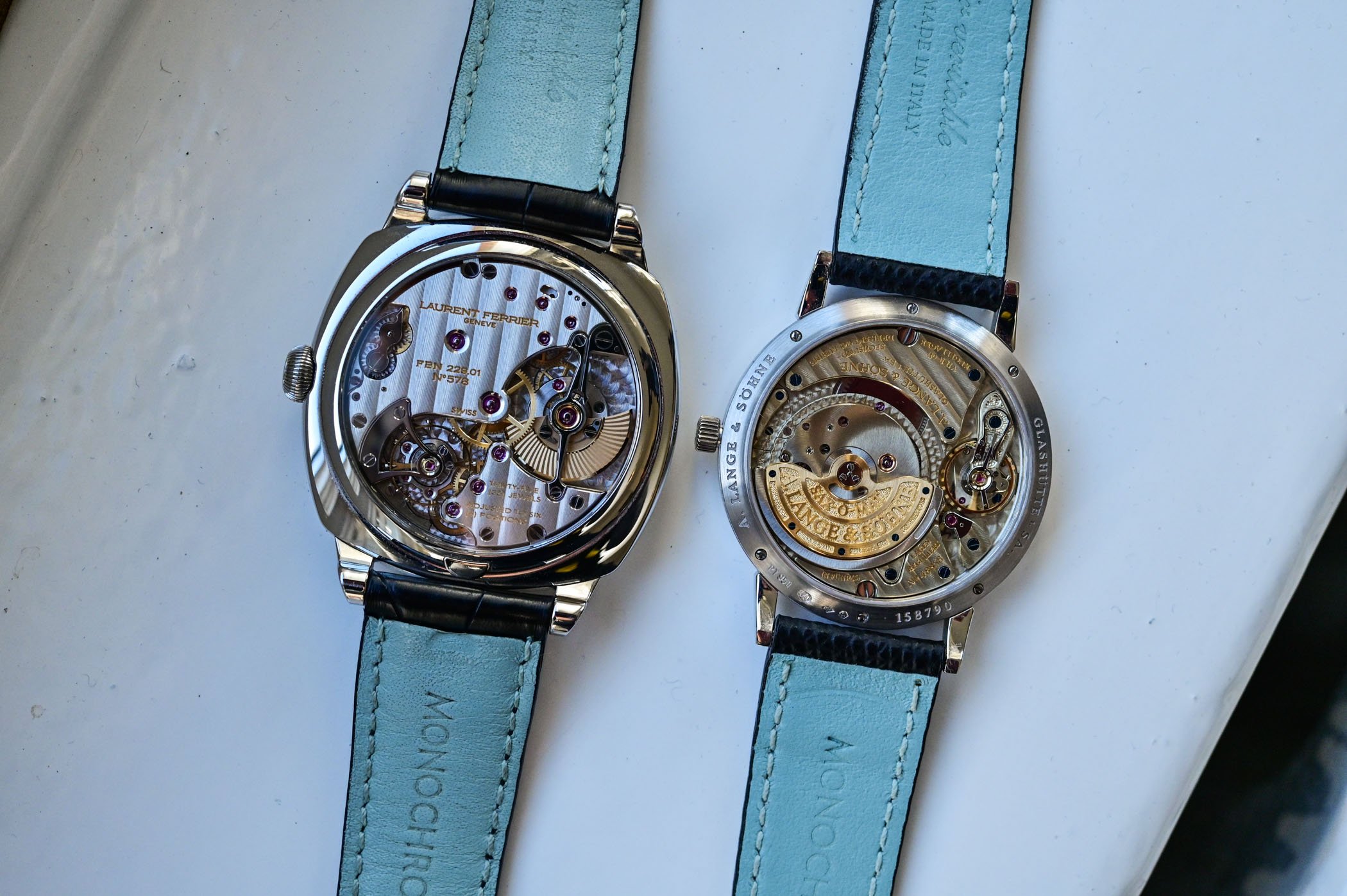
As always, to a given problem, there are multiple possible solutions. When it comes to winding a watch, following the old-school and rather simple solution of the hand-wound movements, then came the automatic winding. With the advent of the wristwatch in the first half of the 20th century, watchmakers worked on finding solutions to give a movement some perpetuity, and designed wristwatch-sized calibres equipped, for the most part, with a central oscillating weight. But… this isn’t the only way to give energy to a movement. You know us here, at MONOCHROME, we have a passion for mechanics and beautiful watchmaking. And this is where the micro-rotor comes into the equation. And adds beauty to our fine watches.
The micro-rotor – what and when
There are basically three ways to make an automatic watch – with a fourth one, the bumper movement, almost not in use anymore in watchmaking due to its weaknesses. The concept is, in all solutions, to have an unbalanced mass rotating thanks to the movements of the wrist, then transmitting its energy to the mainspring barrel and thus storing energy to then be delivered to the escapement. The most common, most practical and often considered the most efficient solution is the central rotor. In this solution, used by 99% of the self-winding watches currently produced, the oscillating weight is positioned above the movement and mounted centrally. This way, it can use the entire space available within the case. It also benefits, thanks to its larger size, of more inertia. In this regards, it transmits more energy to the mainspring barrel.
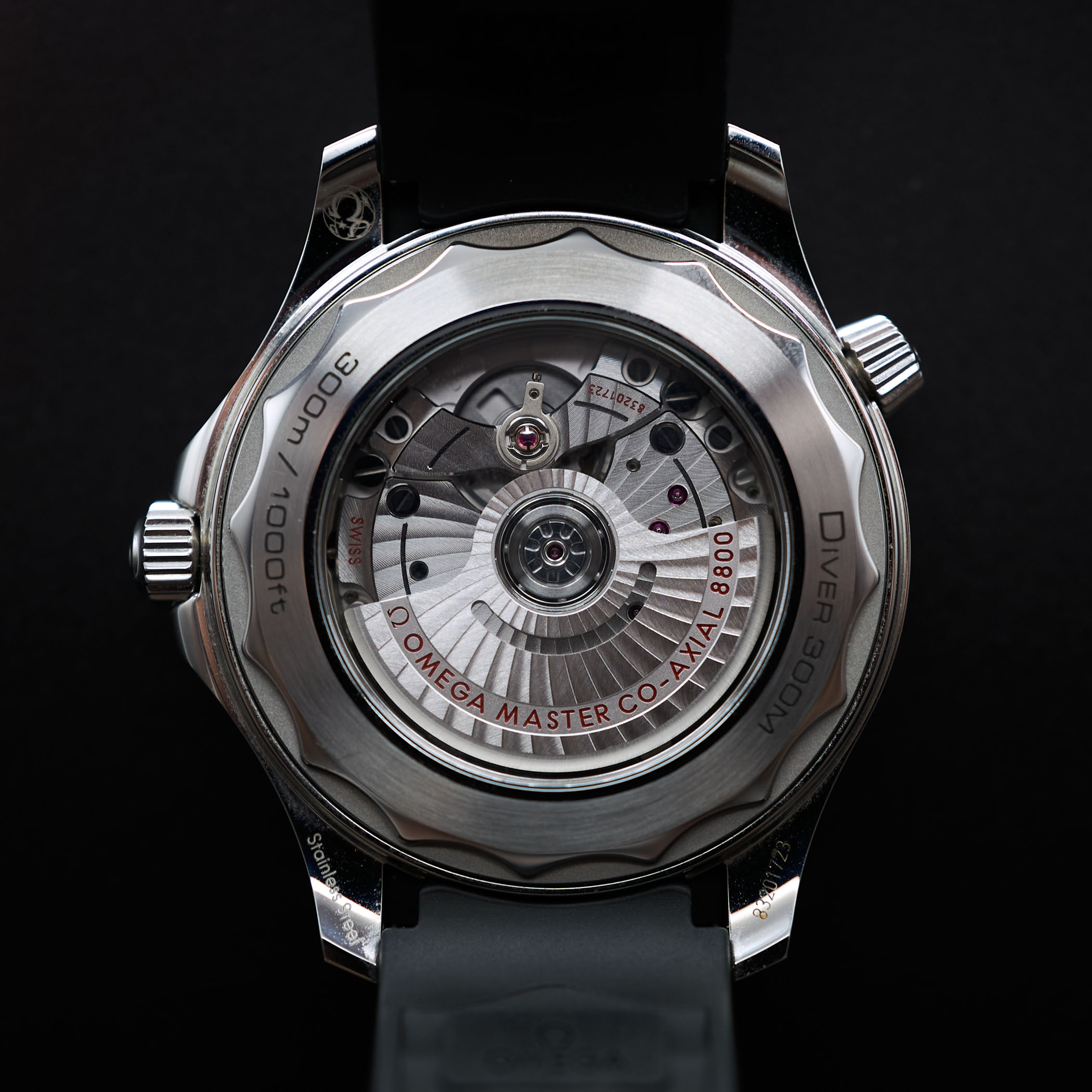
The second solution, which we’ve explained in details here, and is probably one of the most satisfying innovations of recent years, is the peripheral rotor. First patented in June 1955 by Paul Gosteli, it would be used on rare occasions during the 1960s by Patek Philippe. The fame of the peripheral rotor can be credited to Carl F. Bucherer, which brought it back in the late 2000s and made this solution a hallmark of most of its movements. With the peripheral rotor, the oscillating weight is mounted on the periphery of the movement and connected to it thanks to rollers with ball bearings. The advantage is that the movement remains entirely visible, and the rotor benefits from a large diameter, and thus more inertia.
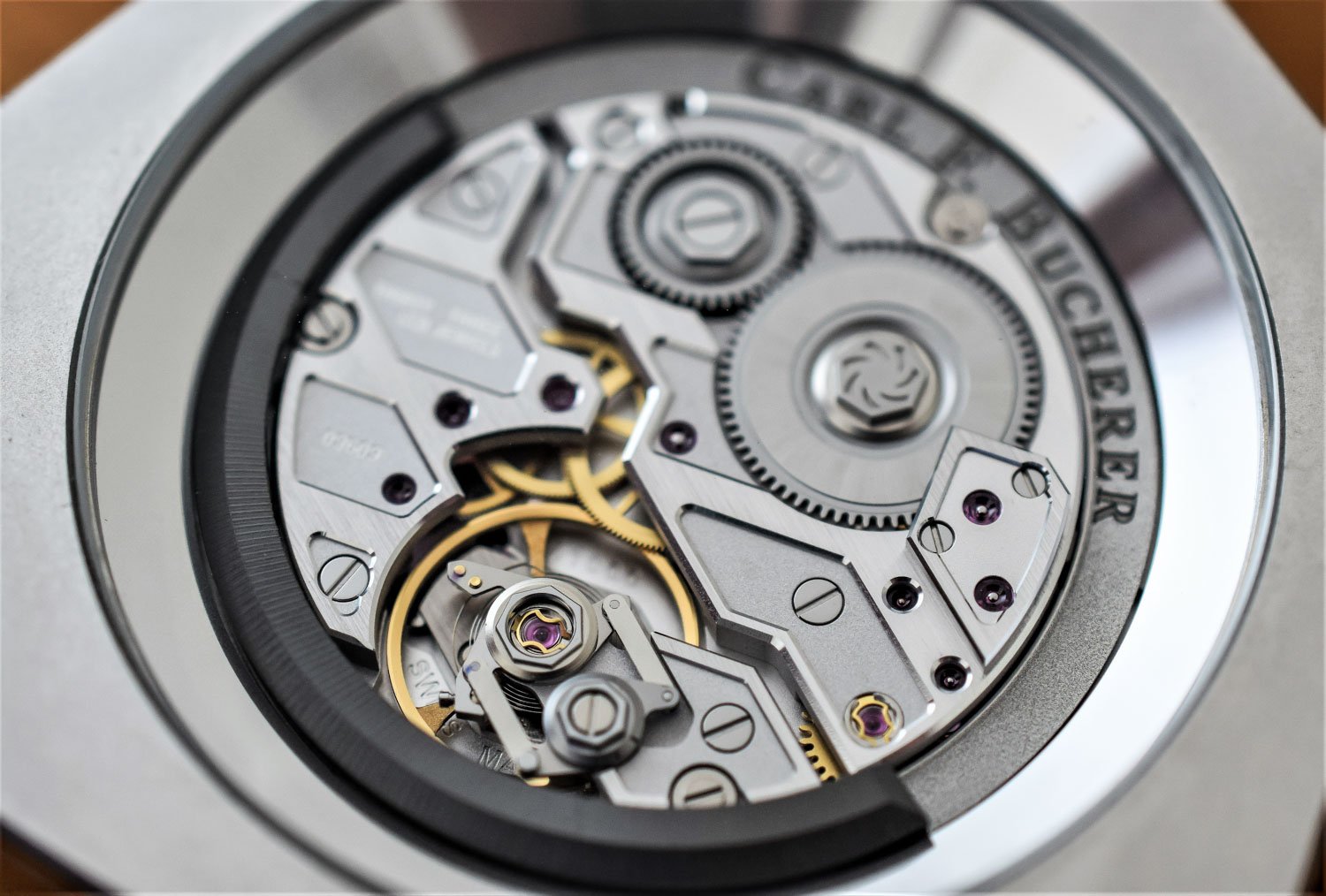
The third solution is the micro-rotor. On the contrary of the central or the peripheral rotor, the oscillating weight of a micro-rotor movement has a reduced size and is, in most cases, integrated into the movement. This small rotating segment has a diameter that often covers about ¼ of the movement space – sometimes a bit more, as you’ll see below with a Lange and its ¾ rotor. The advantages are relatively easy to understand. This allows the create thinner movements, as the winding system is not over the movement but integrated into the movement. This allows to have an uncluttered view over the movement, as there’s not oscillating weight rotating over it.
There’s, however, one major issue with the micro-rotor. Because of its smaller size, micro-rotors can’t generate as much power as a centrally-mounted rotor, mostly because their limited diameter provides less inertia. There are, however, some ways to counteract this issue, mostly by using dense and heavy materials, such as platinum or tungsten. This will provide better efficiency. The other solution is to create a bi-directional winding system, thus most of the wearer’s movements will be transmitted to the rotor and then to the mainspring barrel. Yet, micro-rotor are notoriously known for not being as efficient as a central or peripheral rotor… But they do look great!
Regarding the “when” about the micro-rotor, it first appeared in the late 1950s, with 2 almost simultaneous propositions done by Universal Genève on one side and Büren on the other. The latter gave the name “Planetary” to its movement, later released as the Super Slender. UG on its side worked on an equivalent technology trademarked the term Microtor, with the calibre Cal. 1-69. Both are said to be from 1958. Two years later, in 1960, it was the time for ultra-thin specialist Piaget to propose this technology, a perfect solution for developing an automatic Altiplano watch. This came in the shape of the calibre 12P with its 2.3mm thickness.
A first time of fame for the micro-rotor came in 1969, when the first automatic chronographs were presented. Some might have forgot that the Calibre 11 or Intramatic Heuer/Breitling/Hamilton/Büren was based on a micro-rotor movement by Büren with Dubois-Depraz providing the chronograph module. Another time of fame for the micro-rotor came in 1977, when Patek Philippe released one of its most important movements, the thin Calibre 240, a movement that still powers many high-end and complicated models at PP. And finally, we have to remember that Bvlgari’s Octo Finissimo series of watches take full advantage of the micro-rotor technology to create the thinnest automatic movement, or the thinnest perpetual calendar.
A love letter to the micro-rotor
Now comes the question… Why do we love a technical solution that we know is not the best when it comes to efficiency and its capacity to wind a movement? Well, the answer is relatively simple and has to do with everything irrational in high-end watchmaking. It’s all about passion for fine mechanics, for the beauty of a finely crafted movement, for a solution that allows us, and most likely you, to enjoy as much as possible the view on these small rotating parts in a movement and the beauty of the finishing… Yes, the whole concept of mechanical watchmaking is somehow irrational and so is the use of a micro-rotor. Of course, I’m exaggerating the trait here.
A micro-rotor, thanks to modern technologies can be pretty good at doing its job. Thanks to use of bi-directional systems and high-density materials, some micro-rotors are almost as good as winding a movement than a classic, relatively lightweight central rotor. Plus, they are sometimes the only technical solution in order to tackle a given issue. As said, without a micro-rotor, Bvlgari couldn’t have done a perpetual calendar movement that is 2.75mm in height. With a central rotor on top, it would have been probably 1mm more in height. And due to the horizontal construction of the movement, where most parts are not stack one on top of another, adding a peripheral rotor would have made the movement too large.
And more than that, it’s mostly about the beauty of mechanical watchmaking. As an illustration, we’ve taken 4 very different watches, all equipped with micro-rotor. First in line is an important movement, one of the most famous movements equipped with a micro-rotor. Presented in 1996 by Chopard and developed by Michel Parmigiani, this twin-barrel movement calibre 96 has become the foundation for a large part of the L.U.C collection. Here, we have the Calibre 4.96 inside a rather unexpected sporty watch, the L.U.C Sport 2000. This 3.3mm thin movement combines the beauty of the micro-rotor construction with quite some power thanks to two stacked barrels for a total power reserve of 65 hours. And then comes the refined finishing L.U.C is known for, together with a nice work of the brand on the way the bridges and the plates are designed.
Then come one of our favourite independent watchmakers, and one of the best movements he has ever presented: Laurent Ferrier and the double direct-impulse calibre. In order to tackle the issue of efficiency, LF is using a pawl-fitted micro-rotor, giving a total of 72 hours of power reserve. In addition to the complex silicon escapement’s double direct-impulse on the balance. And then there’s of course the superb finishing of the movement, full of anglage and black polished parts, such as the transversal bridge holding the micro-rotor into place.
Continuing in the high-end and classic category, the A. Lange & Söhne 1815 Sax-O-Mat, with a typically German take on the micro-rotor. Following the tradition of the ¾ plate, ALS developed a not-so-micro-rotor that covers most of the movement, yet leaving the view uncluttered on what matters, namely the screwed balance wheel and the hand-engraved cock. A nice combination of classic German watchmaking with a technical solution that, thanks to the platinum mass on the rotor, offers a very decent inertia and winding efficiency.
Finally, and we somehow had to include this watch, there’s our Montre de Souscription 2, the Czapek Antarctique Monochrome White. A highly modern take on watchmaking and on the micro-rotor, the movement dubbed Calibre SXH5 is equipped with a 100% recycled 950 platinum oscillating weight – an upgrade developed by Czapek over the first generation of movement, thus providing more inertia and better winding capacity compared to the early movements. And that architecture leaves the view opened on the superb construction with seven bridges, five of which being open-worked, offering a captivating perspective on the inner workings.
So yes, we know the micro-rotor isn’t the best in the business when it comes to winding a watch. It’s a fairly complex technical solution and it requires to develop the movement from scratch as a micro-rotor architecture. Surely, a central rotor is a better solution for a daily-wear watch, but we can’t help ourselves… We love micro-rotors!

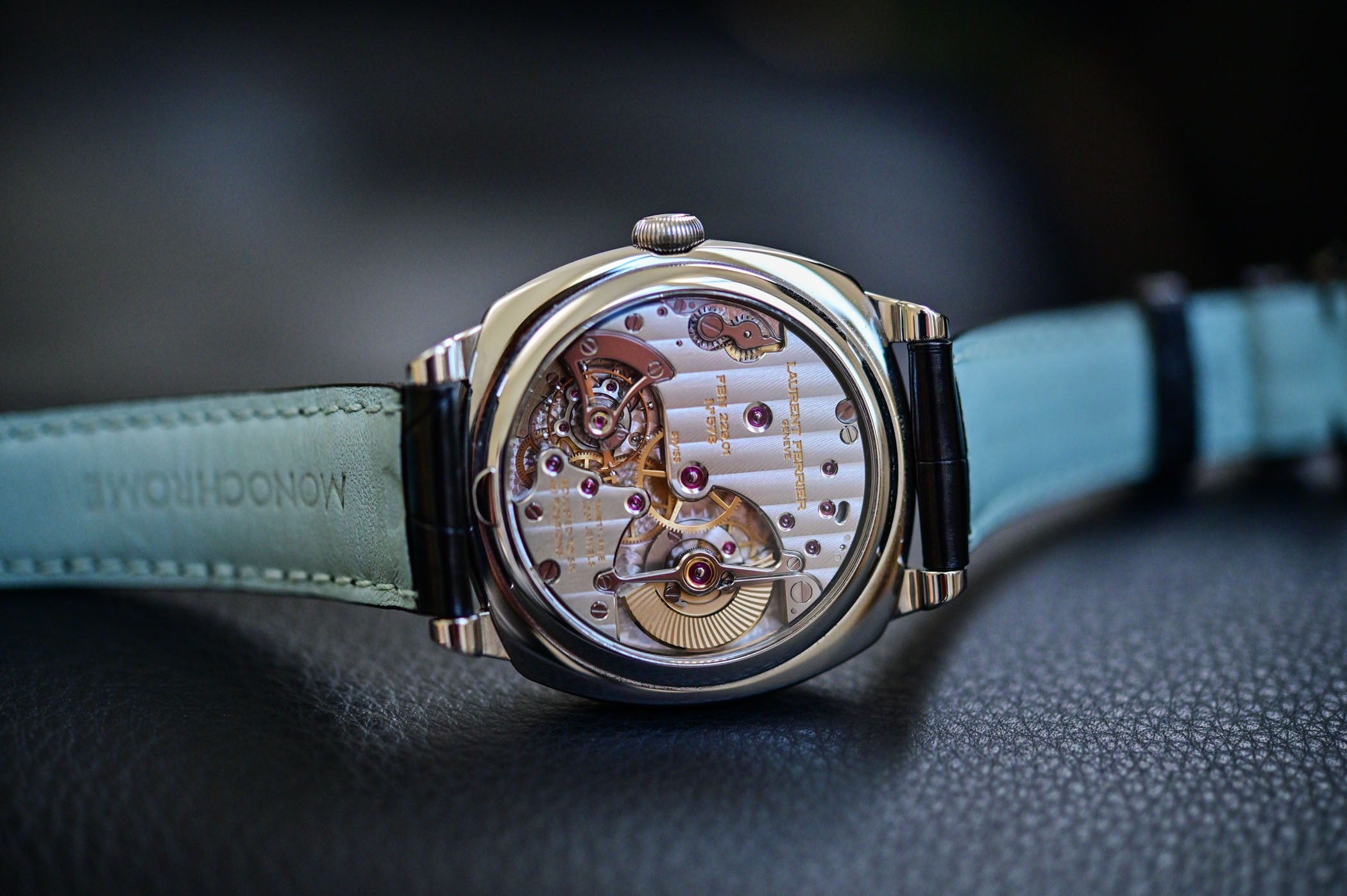

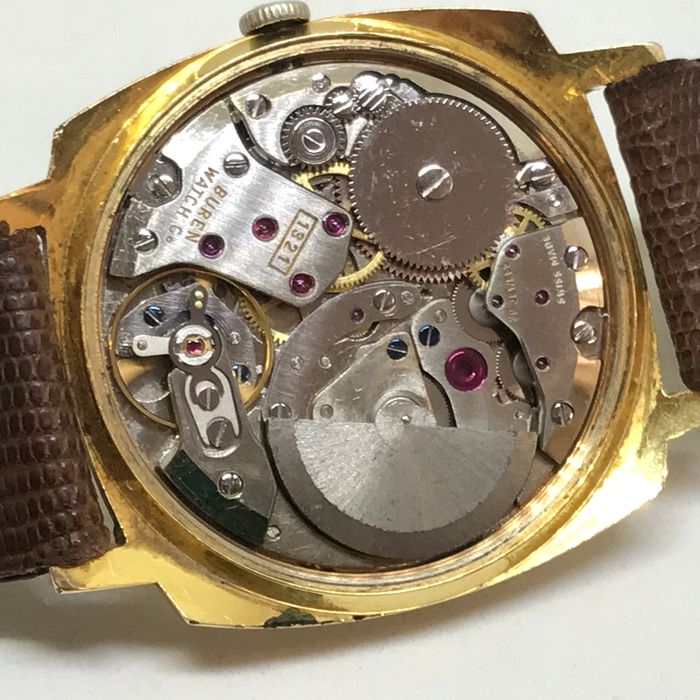
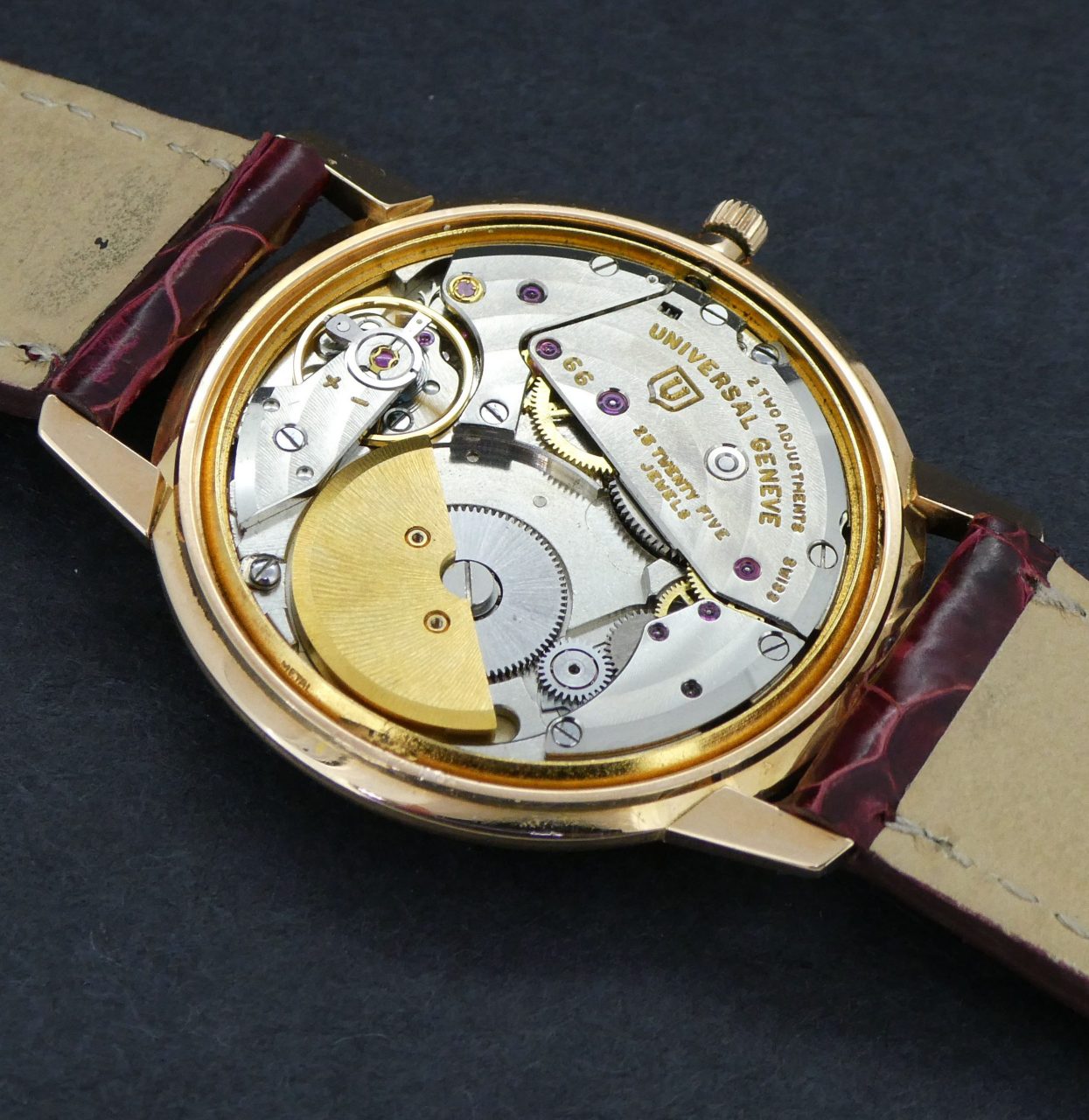

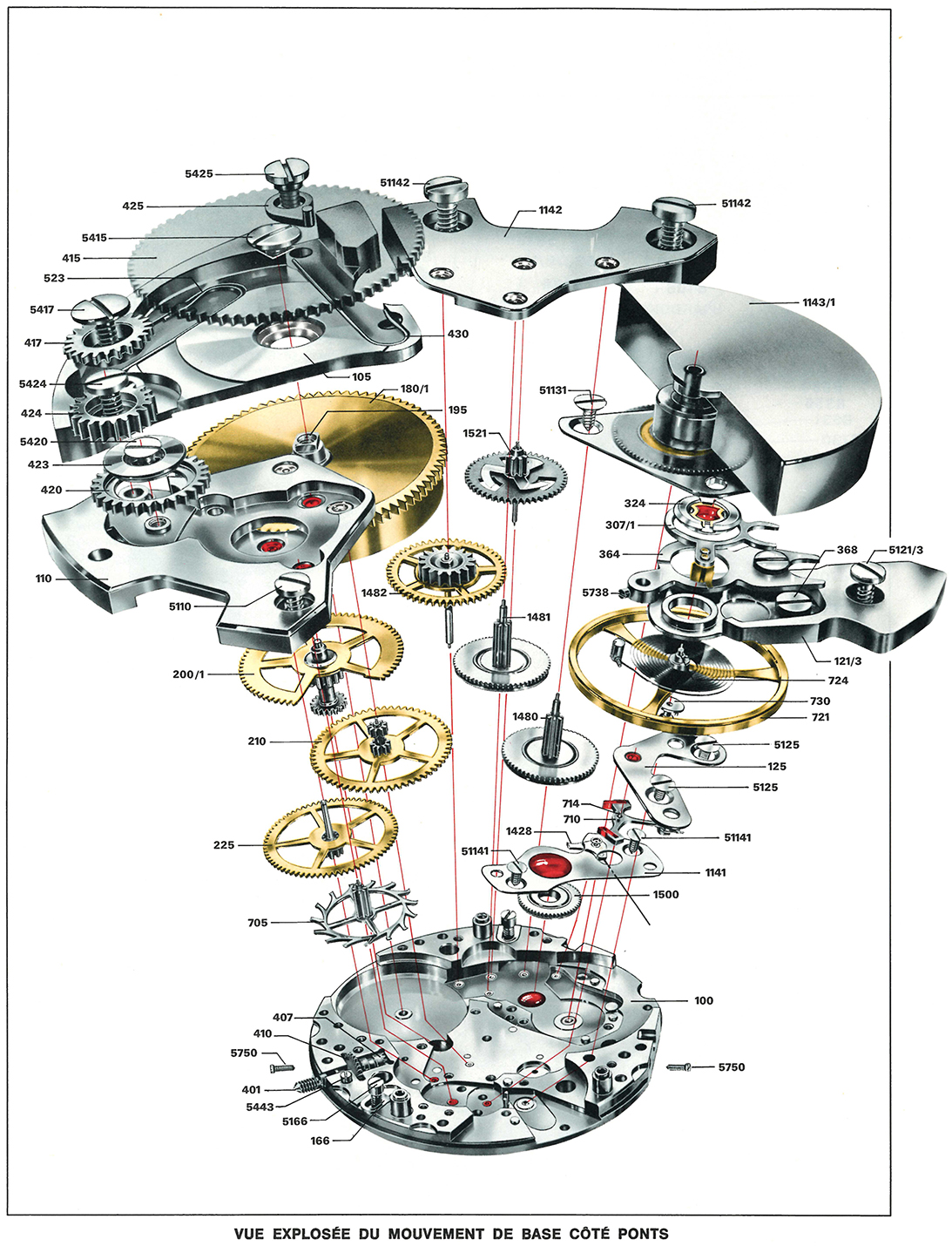

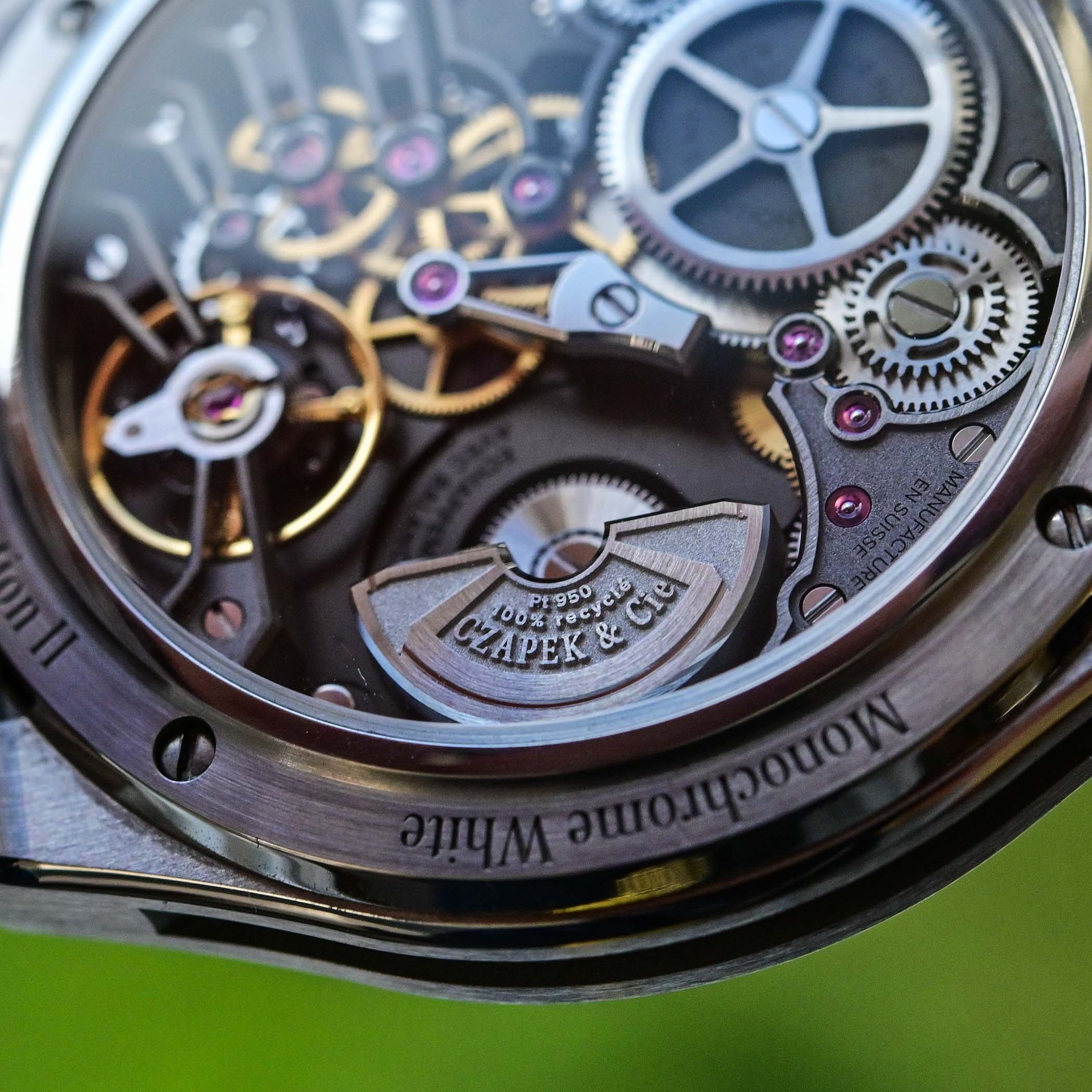
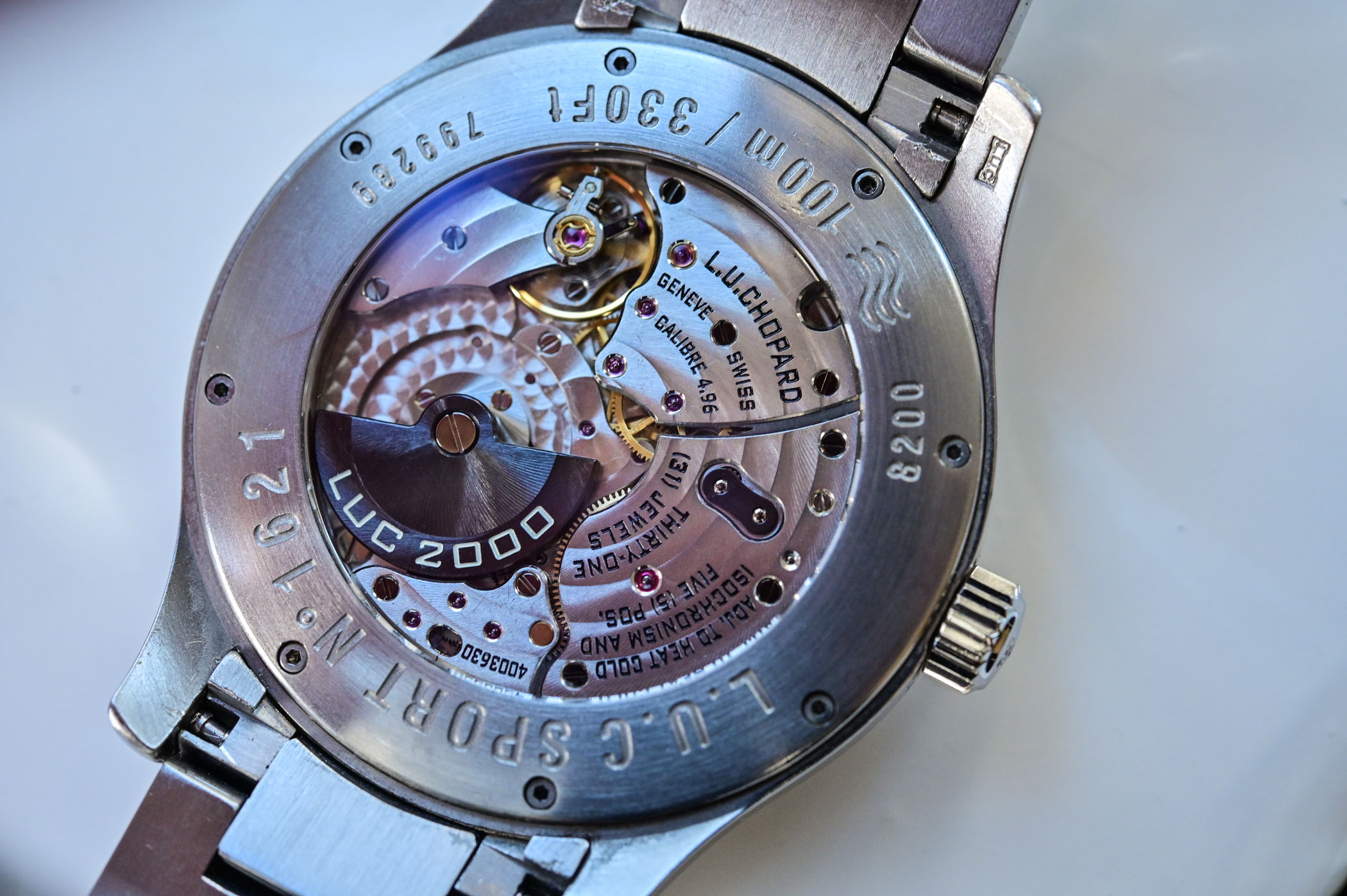
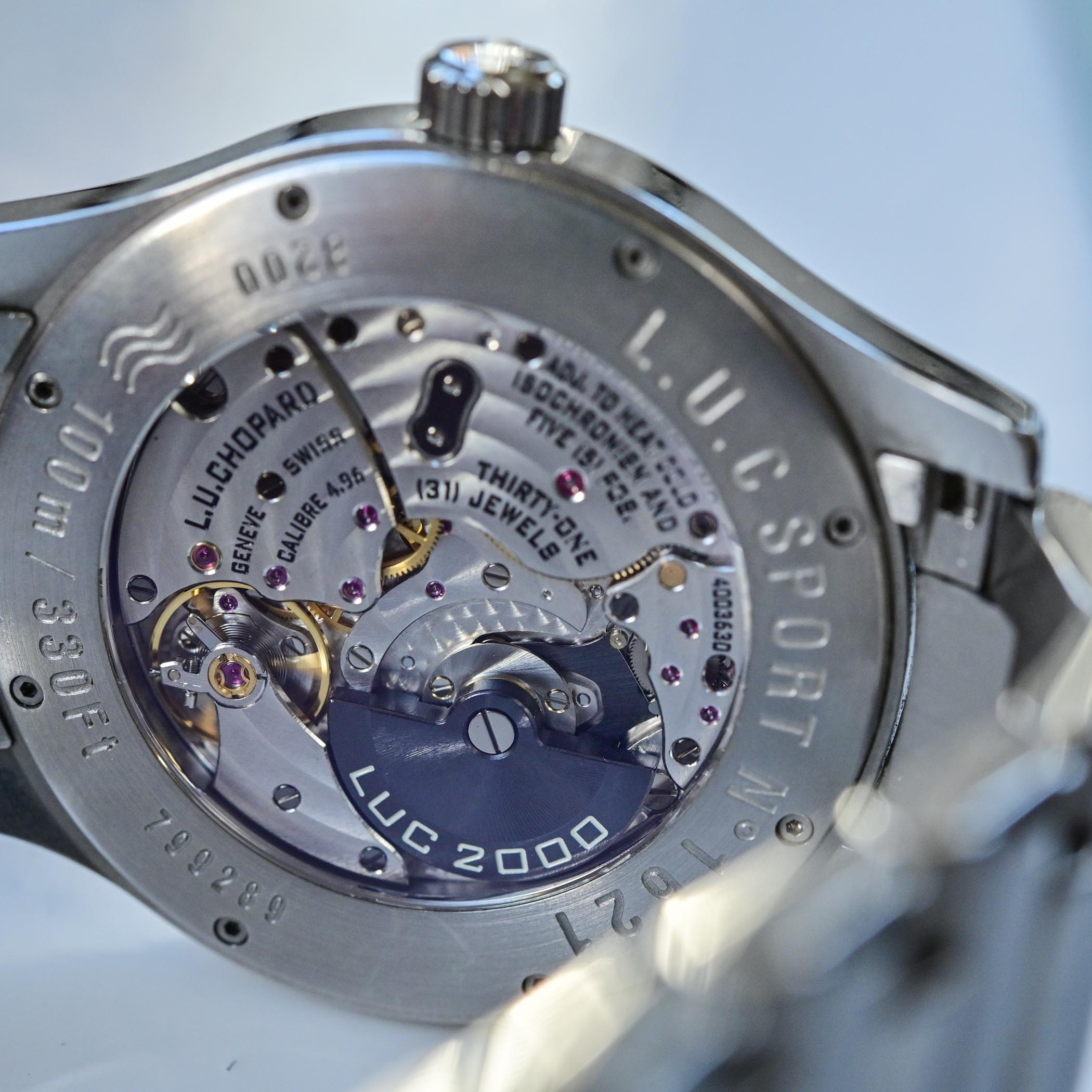

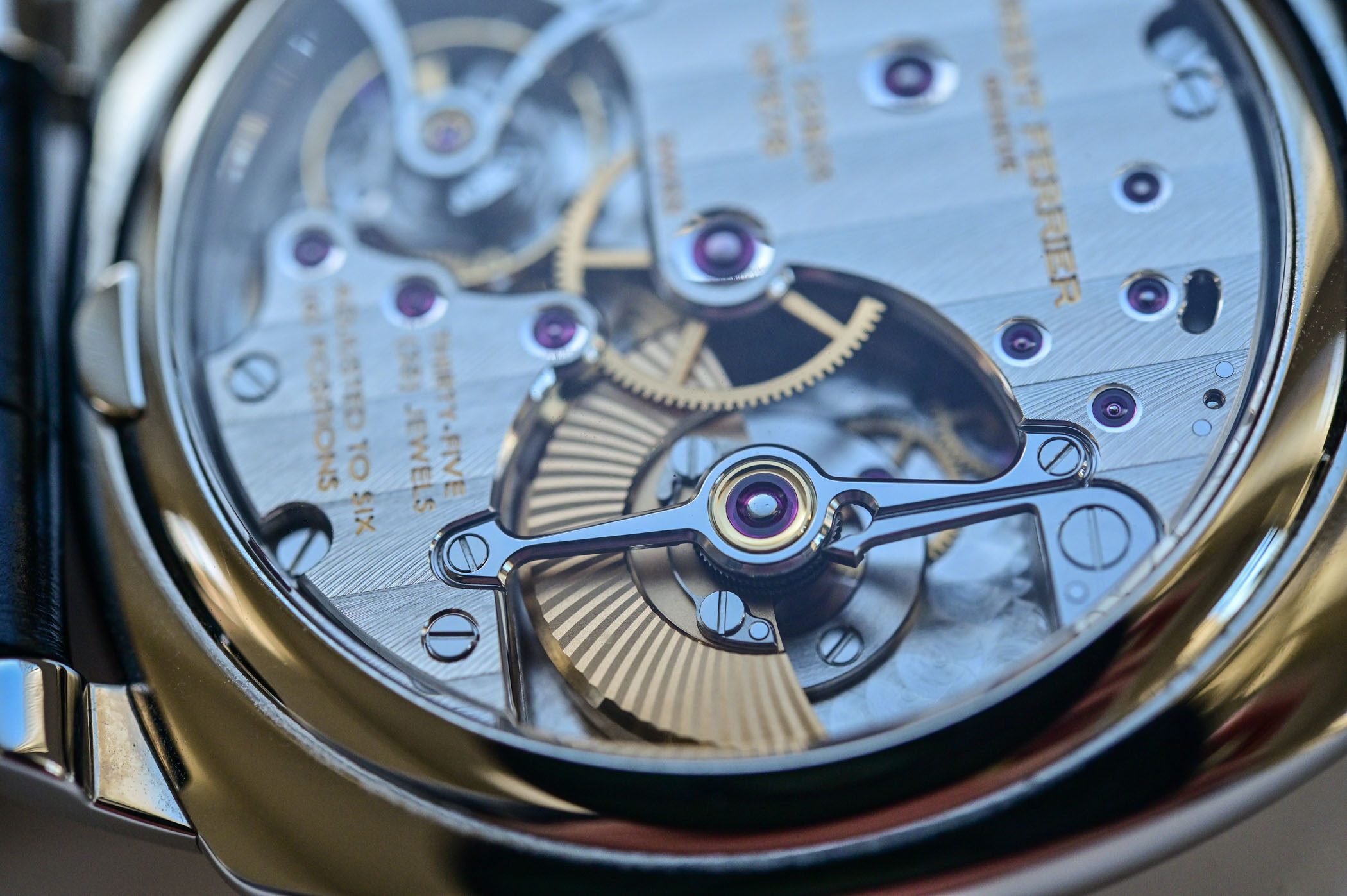
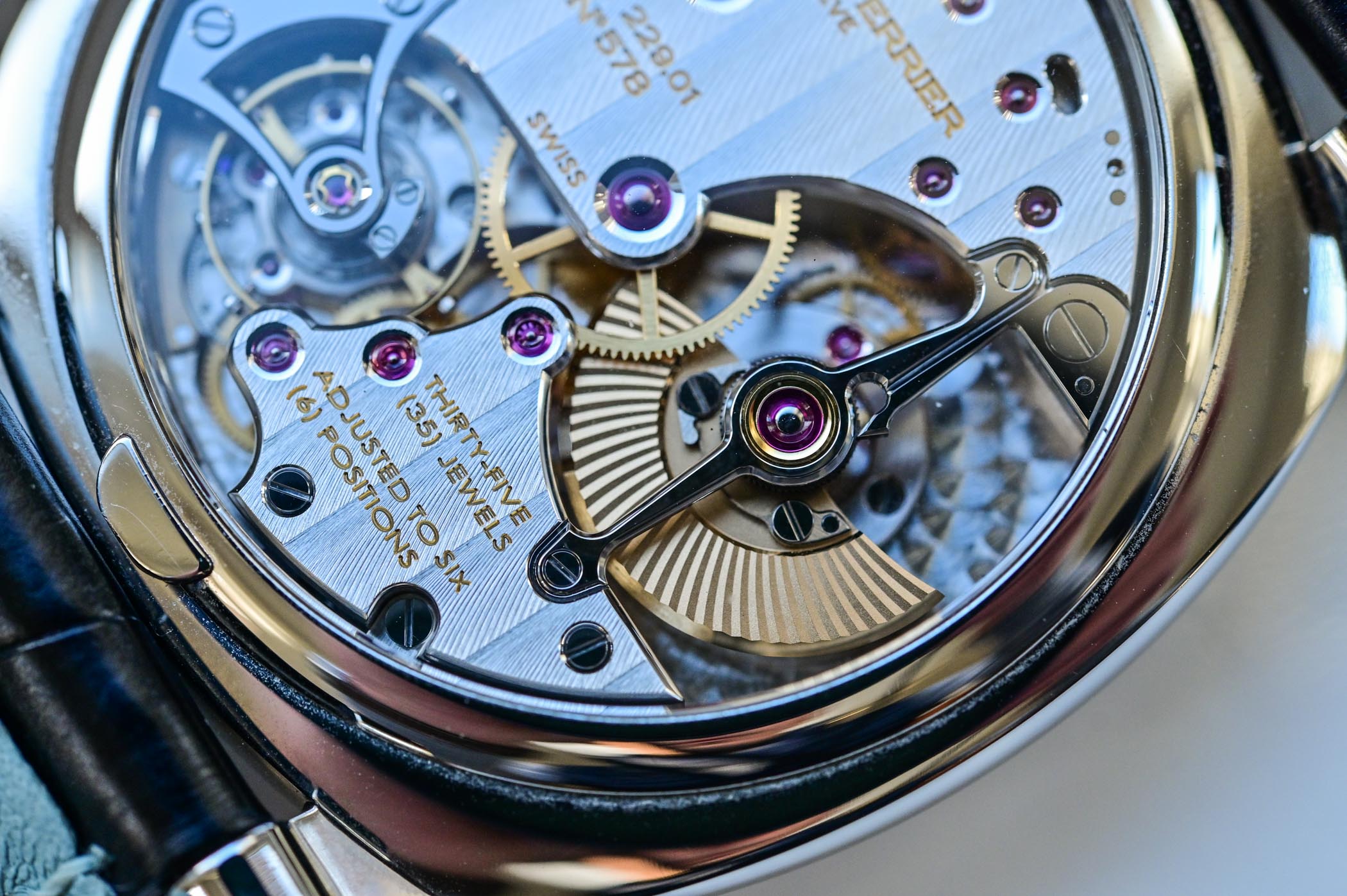

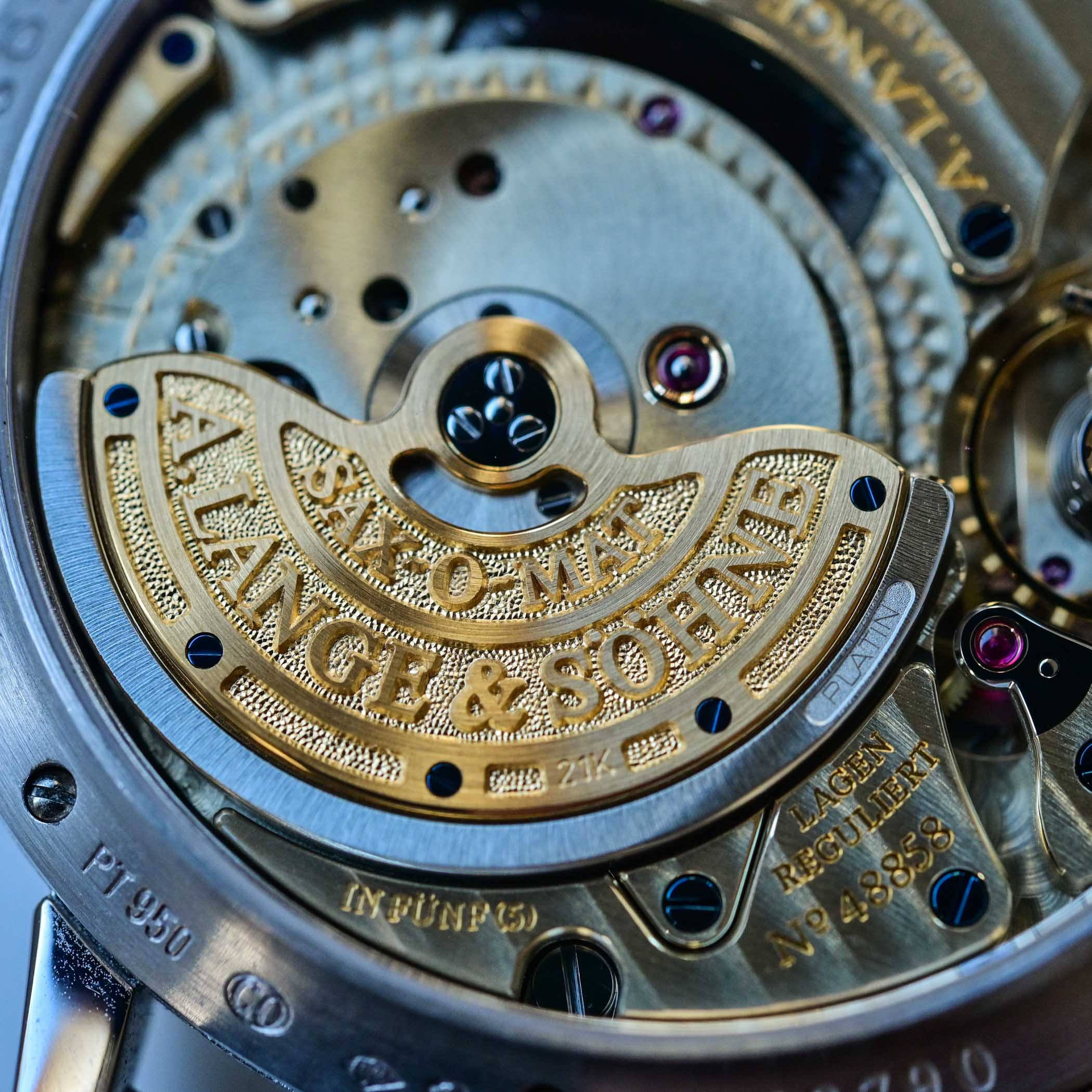
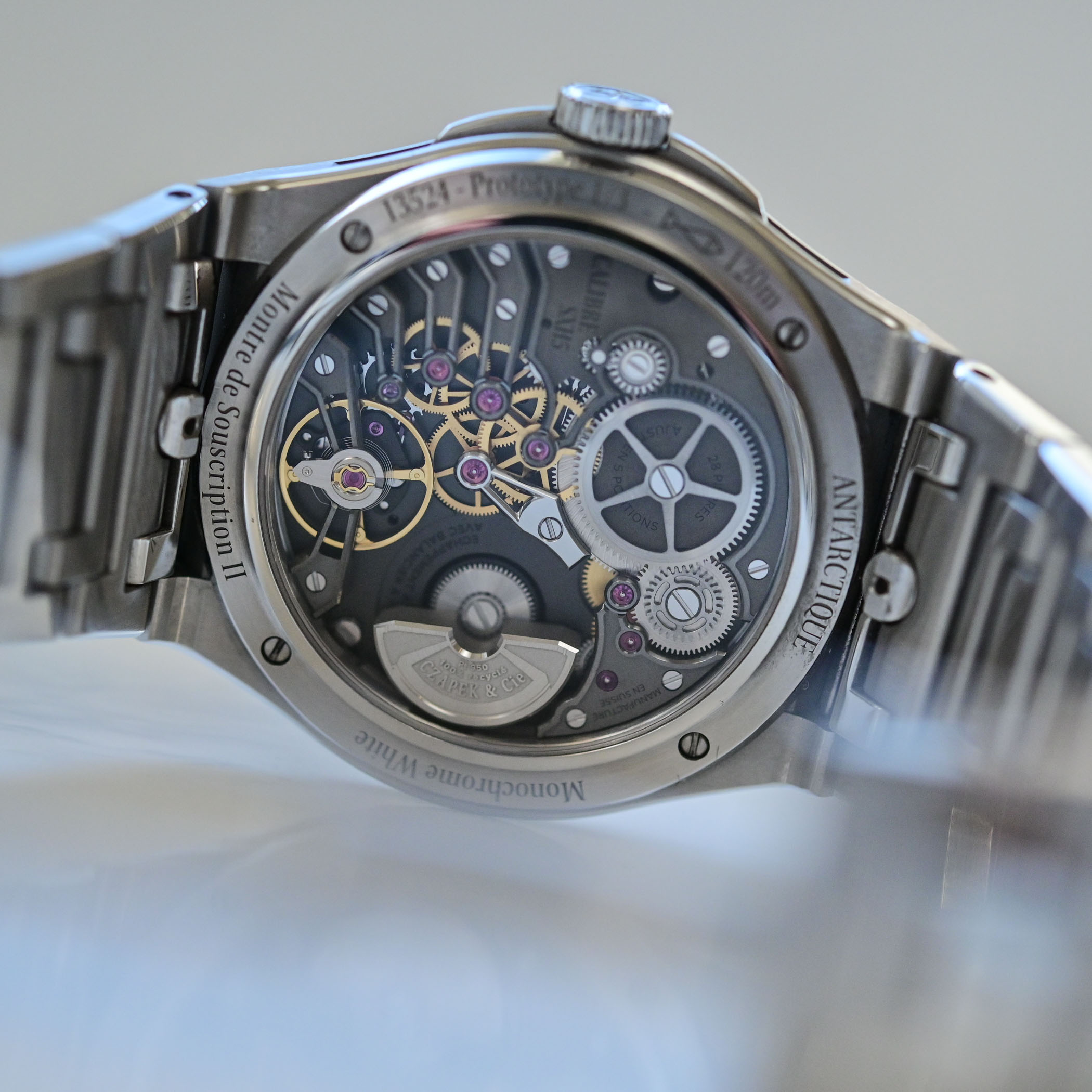
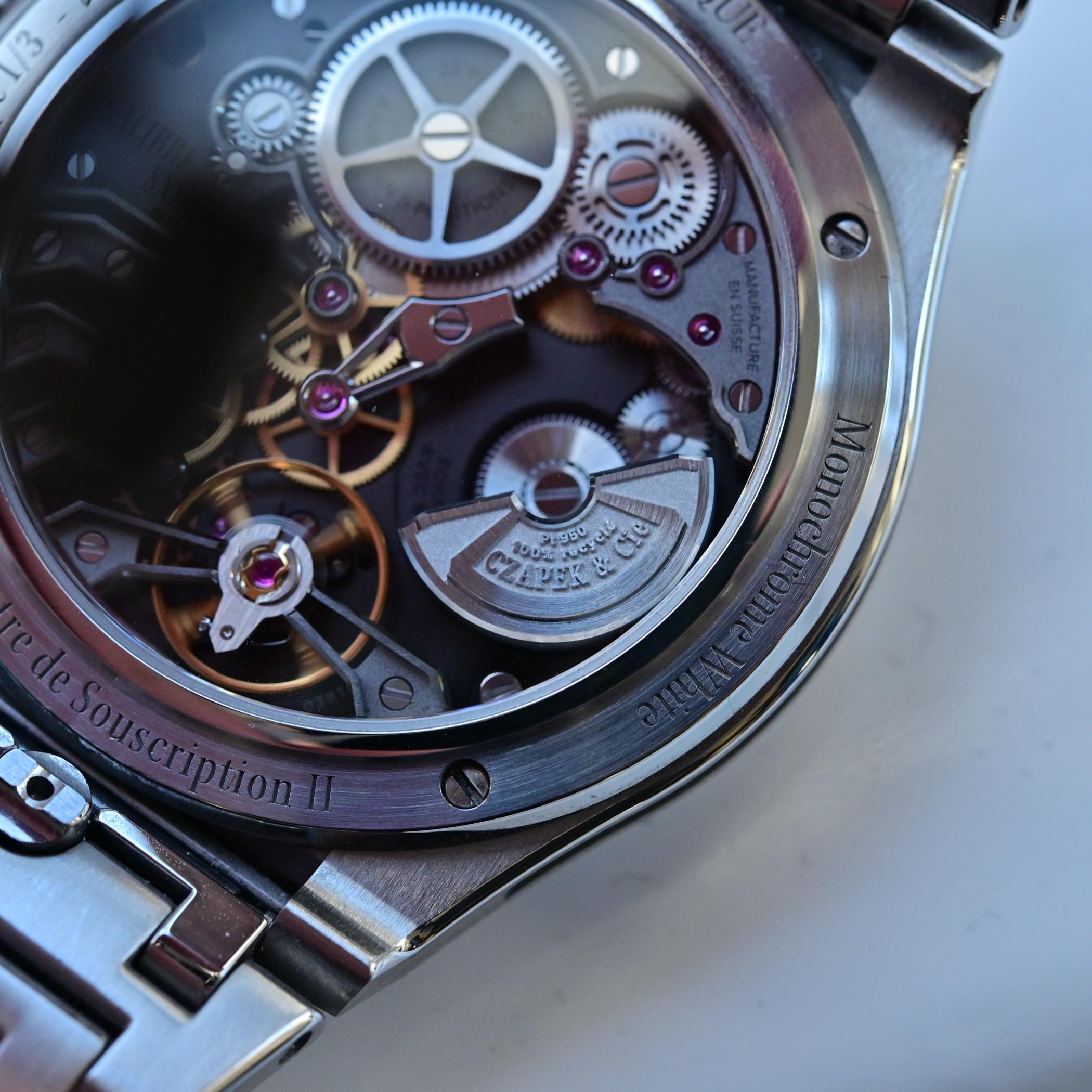



6 responses
Laurent Ferrier looks like a Panerai copy&paste from the backside
Thanks for the insight into micro rotors. A good excuse to add a Bvlgari to my collection. Good to see watchmakers going green I expect that the scrap platinum would have gone to landfill without the recycling initiative.
A few manufacturers take the micro rotor movement a step further with the dial side micro rotor. Examples include Armin Strom, Roger Dubuis, and Romain Gauthier, among others. Thank you for the love letter to micro rotors! You definitely are not alone in your passion for them!
Great article. Don’t forget the Speake-Marin!
YEMA has recently unveiled a micro rotor movement with a more modern twist to it by matching the dial color with the movement. I really sets them apart the competition and we’ll definitely see more of this in the near future
Just want to give a shoutout to the G. Genta designed UG Polerouter which was the first watch to use the micro-rotor movement pictured above. You can pick these up at brilliant prices if you look hard enough – a lot more accessible than the watches you mention!